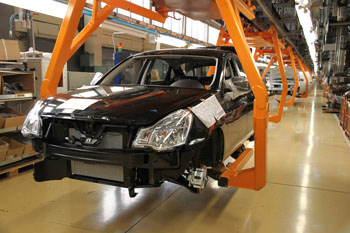Renault Nissan увеличивает локализацию запчастей и силовых агрегатов в России благодаря совместному предприятию по производству двигателей и ходовых частей с Автовазом в Тольятти. Завод будет пущен в эксплуатацию в 2015 году.

Подготовительная стадия производства почти завершена. Российский автопроизводитель собирается до 2020 года инвестировать в проект 32 млрд рублей. Кроме двигателей на заводе будут выпускаться компоненты ходовых частей, приводные узлы и прочие компоненты. Здесь же, в Тольятти, Alliance выпускает автомобили Renault, Nissan и Lada.
“The new plant will be producing the engines in the amount of 450,000-500,000 units per year,” a spokesperson from Avtovaz told Automotive Logistics. “It will be engines of 1.6 litres for the cars Lada Largus and Nissan Almera, as well as some models of Renault, such as the Renault Logan, Sandero and Megane.”
“For some models the new plant will allow us to abandon import supplies,” the spokesperson added.
Renault Nissan currently imports chassis and engines to Russia from Romania and Spain. The carmaker is able to import such components with a customs duty of 0% as per the ‘166’ regulations that it and other manufacturers signed with Russia. To maintain this benefit, the carmakers must assembly 350,000 vehicles per year in Russia by 2020, including 60% local components and 30% local content for powertrain.
According to the company, the new plant is part of initiatives that will increase total localisation from 62% to 72% for the Alliance. As well as contributing to meeting the targets, a spokesperson for Renault said that the project would significantly improve logistics cost, and cut lead times for engines and chassis from five days to one or one-and-a-half days to the Togliatti plant.
Renault Nissan has further increased its localisation efforts in Russia with the formation last month of a joint purchasing organisation with Avtovaz, which will set procurement, quality and delivery standards for common parts across shared platforms.


































